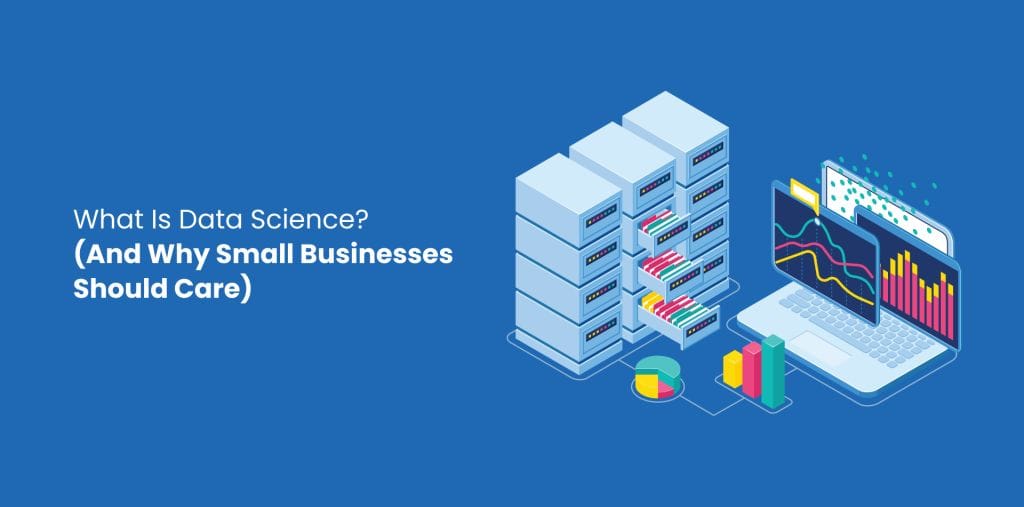Last Updated on –
Business
How Small Businesses Can Leverage Data Science to Make a Big Difference
Introduction: Why Data Science Isn’t Just for Big Tech
By leveraging Data Science, small business owners can enhance decision-making, cut expenses, and drive faster growth through optimized advertising and accurate customer behavior predictions. This blog breaks down how small businesses are already using Data Science, with real examples, practical tips, and a roadmap for getting started, without needing millions in funding.

What Is Data Science? (And Why Small Businesses Should Care)
Data Science is a multidisciplinary field that combines mathematics, statistics, computer science, and domain expertise to extract insights from raw data.
- Who are your most profitable customers?
- What products are likely to sell next month?
- Why are some customers not coming back?
- How can I reduce unnecessary spending?
Real-Life Use Cases: Data Science in 5 Small Business Scenarios
1. A Local Bakery That Doubled Repeat Customers Using Purchase Patterns
- Six out of ten weekday pastry buyers returned to purchase bread on the weekend.
- Cake orders doubled during birthday months.
2. A Shopify E-Commerce Store Cut Advertising Costs by 35%
- Analyze which keywords were converting vs. wasting money
- Analyze top customer profiles and build similar target audiences.
- Detect time slots where most purchases occurred
3. Predicting Customer Churn in a Subscription-Based Startup
- Login frequency
- Support ticket history
- Plan type and payment delays
4. Restaurant Inventory Optimization Using Sales Forecasting
- Predict busy days based on weather and holidays
- Forecast ingredient usage
- Optimize vendor ordering schedules
5. A Boutique Agency Improving Client Retention with Sentiment Analysis
How Small Businesses Can Get Started with Data Science
- Start with the Data You Already Have Collect insights from sources like Google Analytics, your CRM, point-of-sale systems, email campaigns, and customer feedback tools.
- Define the Business Problem Don’t try to boil the ocean. Focus on one question: How can I increase repeat sales? How can I reduce inventory waste?
- Use No-Code or Low-Code Tools Platforms like Microsoft Power BI, Google Data Studio, Tableau, and Zoho Analytics help you run data science tasks with little technical skill.
- Hire Freelance Data Scientists or Agencies Platforms like Upwork or Toptal let you hire on a project basis, reducing overhead.
- Test, Learn, Repeat Data insights are only as good as the action you take. Use A/B testing and dashboards to monitor performance and adjust strategy.
Benefits of Using Data Science for Small Businesses
- Smarter marketing: Know who to target, when, and with what message.
- Better inventory control: Avoid overstocking and understocking.
- Customer retention: Predict churn and act before it happens.
- Cost savings: Optimize ads, operations, and resources.
Conclusion
In today’s competitive landscape, Data Science is no longer reserved for billion-dollar corporations. It’s a practical, powerful tool that small businesses can harness right now to unlock hidden insights, drive smarter decisions, and create personalized experiences that customers truly value.
Whether you’re running a boutique, managing an online store, or operating a local service business, the data you’re already collecting is a goldmine. you just need the right approach to tap into it. With a clear goal, accessible tools, and either a bit of self-learning or a skilled freelancer by your side, you can solve real problems, increase revenue, and grow with confidence.
FAQ’S
